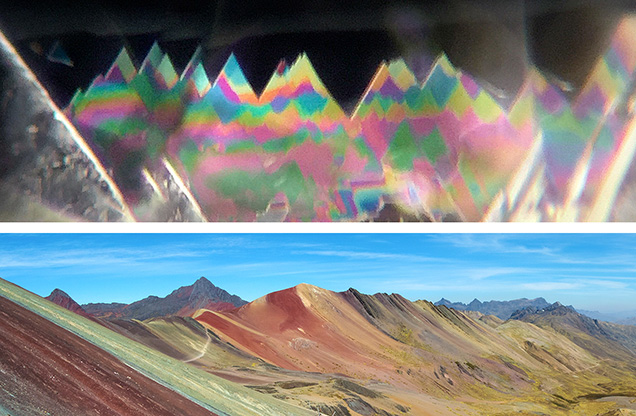Rainbow Mountain in Natural Diamond

At GIA, we occasionally see diamonds with inclusions that resemble natural objects. A breathtaking example was recently observed in a 1.71 ct, H-color, I2-clarity natural diamond. The deep feather in the figure above (top) shows an iridescence feature resembling Montaña Arcoíris (Rainbow Mountain) in the Andes Mountains of Peru (see above, bottom). Thirty years ago, a diamond with a similar feature (Summer 1993 Lab Notes, pp. 123–124) was described as having iridescence due to a thin-film separation caused by a “V”-shaped dislocation.
As with the previously described diamond, the iridescence in this diamond is only visible at some orientations. This memorable effect showcases the beauty of the natural world within the diamond.



